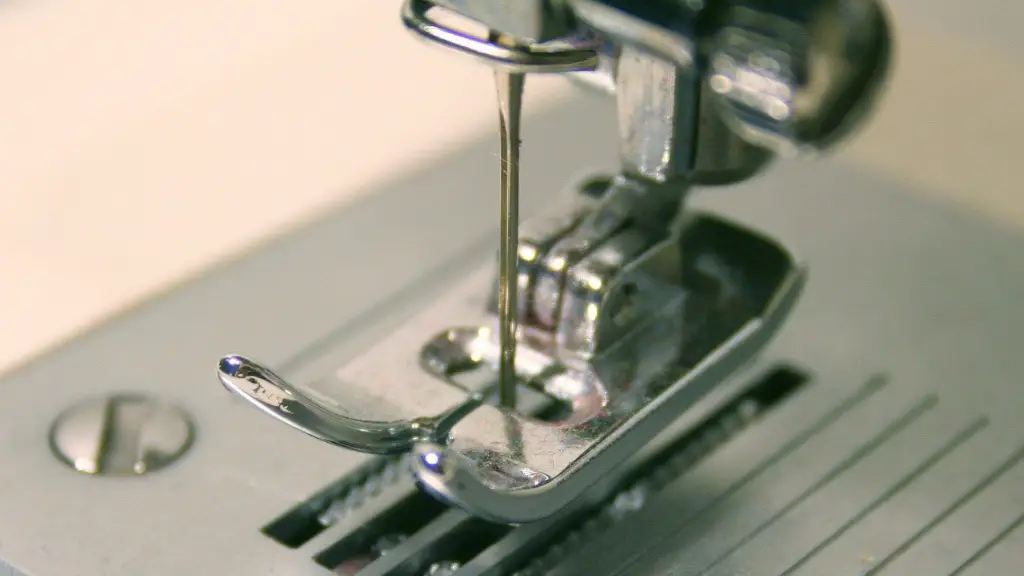Materials Needed for Making a Sewing Machine Cover with Handle Opening
When it comes to protecting your sewing machine from dust, scratches, and other elements, a handmade sewing machine cover is a great way to go. Making your own sewing machine cover is not only inexpensive, but you can customize it to the size and shape of your machine and make sure it has openings for your handle and presser foot lever. Below are the necessary materials you will need to make your own sewing machine cover.
First off, you will need some fabric to make the cover. You can choose any type of fabric, as long as it is thick enough not to tear easily. You can choose a quilted cotton or a microfiber fabric. Make sure to purchase enough fabric in order to cover the entire machine, with additional fabric to make the handle and presser foot lever openings. You will also need quilting batting, which is the middle layer of construction for quilted items. The batting makes the cover more robust for added protection for your machine.
You will also need some ribbons and bias tape for the handle and presser foot lever openings. These items can be found in craft stores and online. Additionally, you will need a zipper, thread, scissors, measuring tape, pins, and a sewing machine. Make sure to select a zipper in the same color as your fabric so it blends in. It’s also a good idea to have extra thread and fabric on hand, just in case you need to make repairs or adjustments.
Instructions for Making a Sewing Machine Cover with Handle Opening
Once you have all the materials you need, it’s time to start making the sewing machine cover. Follow the instructions below to create your own unique sewing machine cover.
Step 1: Measure Your Sewing Machine
Before you start, you need to measure the size of your sewing machine so you know how much fabric you need. Measure the width, length, and height of your machine, as well as the diameter of the handle and presser foot lever. Then, mark these measurements on the fabric and cut out the pieces necessary to cover the machine.
Step 2: Baste the Fabric
Once the fabric is cut, layer the quilting batting in between the right and wrong sides of the fabric. The batting should be slightly larger than the fabric so it is exposed and can be seen. Then, using a basting stitch, sew the fabric together around the edges with the batting in between the two layers.
Step 3: Create the Handle and Presser Foot Lever Openings
Next, you need to create the openings for the handle and the presser foot lever. Measure the diameter of these openings and cut out two circles from the fabric. Then, stitch bias tape around the edge of the circle to keep it in place and create a neat opening. You can also attach ribbon to the side of the handle and presser foot lever for an extra decorative touch.
Step 4: Sew the Zipper
Then, sew the zipper onto one edge along the wrong side of the fabric. Make sure to position the zipper in the center and then sew it in place with regular stitching. Make sure the zipper is located correctly so it opens and closes properly.
Step 5: Attach the Ribbons and Trim
Now that the zipper is in place, you can start to attach the ribbons, bias tape and other embellishments. Sew them in place with regular stitches and make sure to position each one correctly so that everything looks neat and clean when finished.
Step 6: Finish Sewing
Finally, you can start to sew the cover together. For added protection, use an overlock stitch to ensure that the cover won’t fall apart easily. Start by sewing the bottom edges of the cover and then move up to the sides and top. Make sure to leave an opening on one side so you can turn the cover right-side out.
Steps to Flip the Cover Right-Side Out
The last step is to flip the cover right-side out. To do this, start by turning it inside out. Carefully push the corners and edges out so that the cover looks neat and free of wrinkles. Once it is turned inside out, you can start to close the opening with a ladder stitch. And finally, you can turn it right-side out and you’re done!
Tips for Maintaining a Sewing Machine Cover
Taking care of your sewing machine cover is important for ensuring it lasts. To care for it properly, make sure to spot clean the cover when needed. If a large area is stained, you can put it in the washing machine with like colors and cold water. Line dry the cover and make sure not to put it in the dryer. Additionally, avoid using fabric softener when washing, as it can make the cover less durable.
Why You Should Protect Your Sewing Machine with a Cover
Having a handmade cover for your sewing machine has many advantages. Not only will the cover- make your machine look nicer, but it will also keep it clean, dust-free and protected. Additionally, covers can help to keep the delicate electronic parts of your machine safe from dust and other particles. This will help prolong the life of your machine, as well as make it easier to use and maintain.
In Conclusion
Making your own sewing machine cover with a handle opening is an easy and inexpensive way to protect your sewing machine from dust and other elements. In addition to being protective, it will also make your machine look more stylish and give it a personal yet professional touch. It is easy to make with the right materials and with some practice, you can create a cover that is as unique as your own sewing machine.





